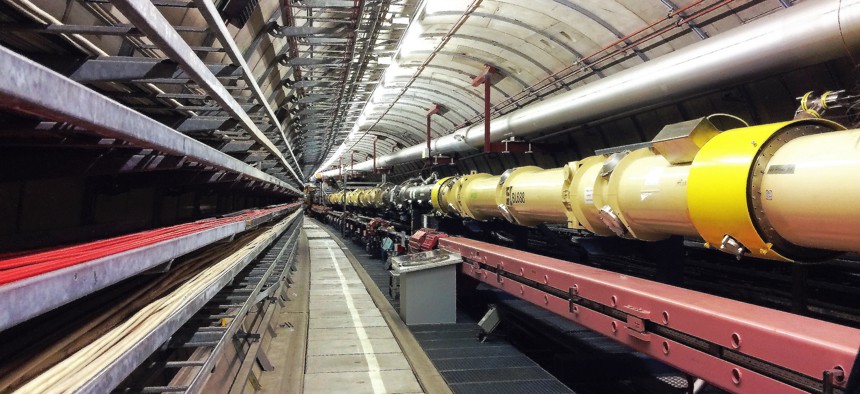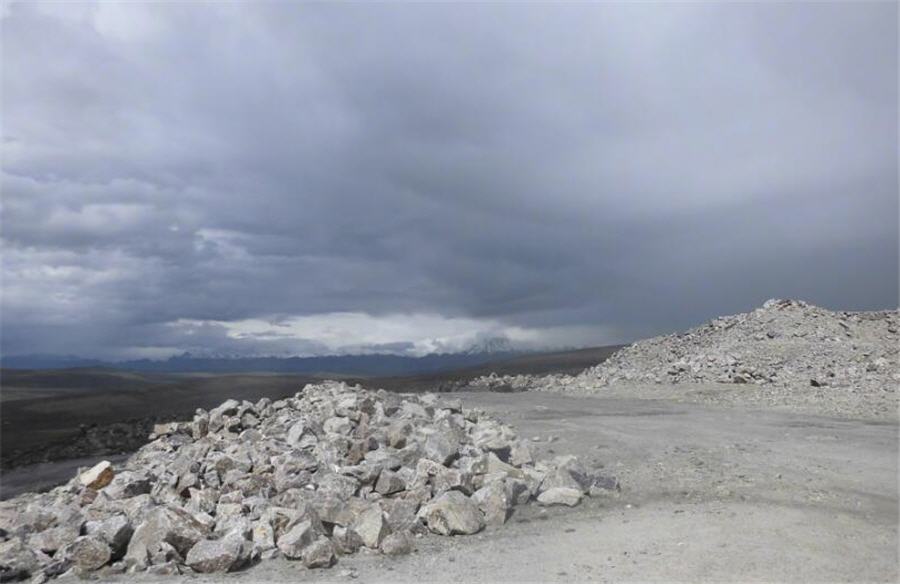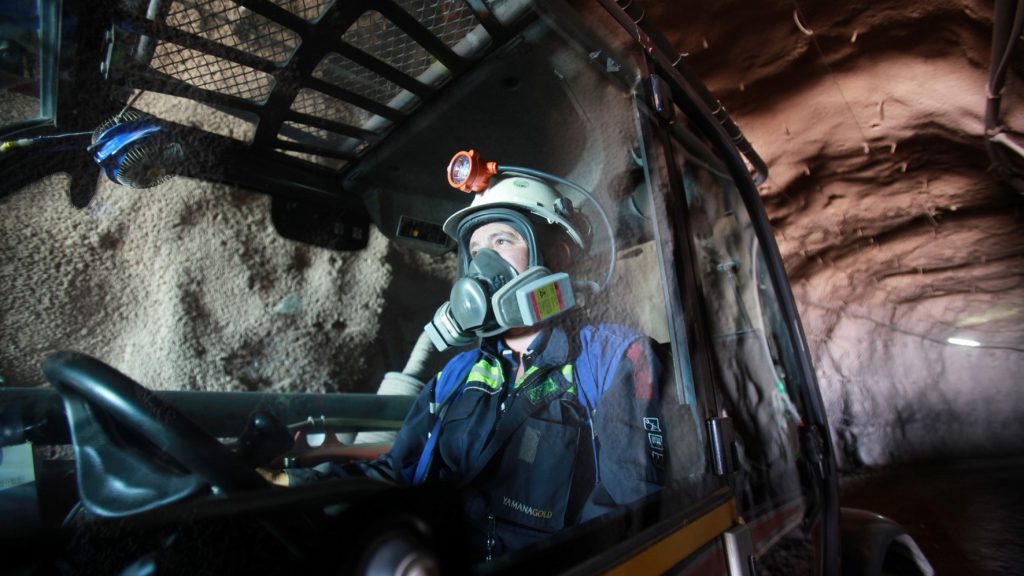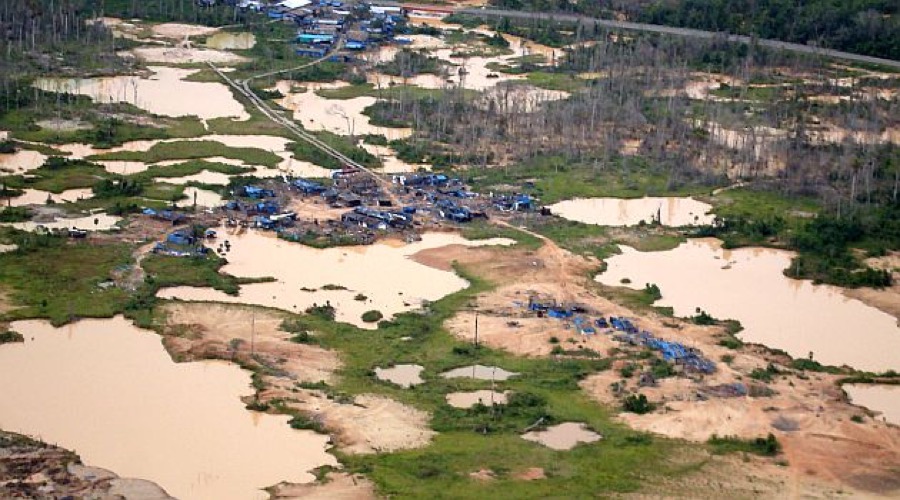WAIT TILL THEY WALK ON LAND
Blood-sucking, snake-like fish arrive in New Brunswick waterways to spawn
Video taken near Belleisle shows the parasitic fish spawning and building nests
It may be bad news that it's once again spawning season for the parasitic sea lamprey, meaning they're moving upriver in New Brunswick in droves.
But the good news is that they're so focused on spawning that their digestive systems shut down.
"They couldn't feed if they wanted to," said Marc Gaden, the communications director for the Great Lakes Fishery Commission.
"They have only one thing in mind once they reach that spawning phase, and that's to find a mate and to spawn successfully."
Sometimes mistakenly called an eel, the sea lamprey is a fish with a powerful suction cup of a mouth filled with multiple circular rows of horn-shaped teeth and a tongue that burrows into the body of the host so it can liquify its tissues and feed at will.
These lamprey spend a good part of their life at sea, attached to, and feeding off the blood of, other fish. But at this time of year, adults return to inland brooks and rivers to spawn.
Oana Birceanu, an assistant professor at Western University in Ontario, has been studying sea lamprey for years.
"I've worked with the sea lampreys for so many years, yet I've never seen them build their nests in the wild," said Birceanu.
That's why she was fascinated by a video taken by Mike Sherwood near his Belleisle area home. It's underwater footage of several lamprey building nests in a brook in Midland.
"It's fascinating," Birceanu said after watching the video.
Sherwood's video show adult lamprey latching moving rocks around — some bigger than softballs.
Other parts of the video show them latched onto even bigger rocks with their powerful suction-cup mouths.
At one point, it even captures two fish spawning in one of the crescent-shaped nests they were working on.
Life cycle of lamprey
Birceanu said the males typically leave the Atlantic Ocean first and lead the way to the spawning grounds.
She said pheromones given off by the larvae from previous seasons that are still in the area help guide them. The females then follow those pheromones and the ones given off by the males, which begin working on the nests even before the females arrive.
She said sea lampreys seek out rocky areas to spawn because the rocks help protect the newly laid eggs. Ideally, they look for rocky terrain upstream and a silty bottom downstream.
The eggs develop into worm-like creatures that make their way to where they can burrow into the sandy bottom. They usually remain in this state, feeding off algae and decomposing matter, for three to seven years — and as long as 14 years in some cases, said Birceanu.
Once they reach about 120 millimetres in length, they stop feeding and they go through a metamorphosis, where they transform into their adult bodies. This roughly two-month transformation even alters the way they breathe, so that they can continue to breathe while completely latched onto a host.
Once the transformation is complete, these juveniles head to the sea, where they attach to host fish and then feed at will as the host goes on with life.
Then, when it's time to spawn, lampreys return to inland waters to start the cycle all over again. But once finished, both males and females die.
"They exert all of their energy in that spawning phase, and they die after spawning," said Gaden.
Same fish, different story
Sea lampreys are native to Atlantic Canada. They are part of the ecosystem, and other species have learned to evolve with them. They are even beneficial to fish such as salmon, by returning valuable nutrients to the environment when scores of them die after spawning.
But in other places, they are an invasive species that has altered the ecosystem and decimated other fish populations.
The Great Lakes were particularly hard hit after new canals opened up new habitat for sea lampreys in the mid-1900s.
Gaden said the sea lampreys' scientific name means stone sucker.
"The power of that suction cup is also what makes the sea lamprey so lethal in the Great Lakes," he said.
They latch onto fish and their tongue drills through the scales and skin of their host and feed on the blood and tissue, usually killing the host.
"Very often in their native range in the Atlantic, the sea lamprey will be a true parasite. That is, it might be able to feed off of the fish and not kill the host and then maybe move on to another species."
But in the Great Lakes, the native species aren't large enough to survive their parasitic hitchhikers, and millions of fish were killed in the process.
Gaden said a single sea lamprey can feed and kill off about 40 pounds of fish in about two years.
For decades, the Great Lakes Fisher Commission has been working to get control over the lamprey population. Each year, they spread lampricide in waterways to kill the larvae by the millions.
Without such vigilant and sustained efforts, Gaden said it wouldn't take long for sea lampreys to flourish again. After all, each female is capable of laying between 50,000 and 120,000 eggs. And without any natural predators, the comeback would be swift.
"Sea lamprey are very opportunistic. If you ease up control even briefly, they'll bounce back in the matter of a couple of years."
The commission keeps a running tally on its website of how many sea lampreys have been killed so far this year. The counter is currently at more than 2.5 million.
Since their numbers peaked, Gaden said the eradication efforts have reduced sea lamprey by 95 per cent, "and that saves well over 110 million pounds of Great Lakes fish a year."
'A great parlour trick'
Gaden helps run the commission public awareness campaign, where he takes live sea lampreys on the road. He said they make "a great parlour trick" and he's lost count of the number of times he's had one attached to his flesh.
He said it's a demonstration of how powerful the suction is, but since lampreys don't feed on warm-blooded animals, they don't drill into humans with their tongue.
Gaden said it's impossible to pull the fish off once they latch. It shows how impossible it would be for a host fish to shake one off itself. He said it takes some effort to squeeze the sides of its mouth until the suction is broken with an audible pop.
"You do have to break the seal. You can't just pull it off. I've heard it described as about as powerful as a shop vac."
Gaden recently took his lamprey show to Parliament Hill and had several members of Parliament volunteer to have a lamprey attached to their hand.
With all the horror-show attributes lampreys have going for them, one legend is not true. Lampreys do not travel across land, said Gaden. Although they're capable of sucking their way over and around barriers, they do not leave the water, unlike some species like the snake head, another invasive species in Canada, which can travel across land for short distances.
The video
Birceanu said Sherwood's video shows the males building the nest. She said the males have a ridge along their back that "looks like a vein." They're also more silvery than females.
She said at one point in the video, the female releases her eggs at the same time the male releases his sperm.
"The male and the female are intertwined and they have that quivering behaviour and that's when they're releasing eggs and the males are releasing the sperm," said Birceanu.























